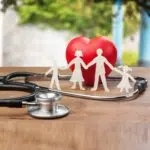World Heart Rhythm Week, observed annually from June 7 to June 13, is a seven-day period during which the international community raises awareness about arrhythmias and the importance of understanding our heart rates. Arrhythmias, also known as cardiac arrhythmias, heart arrhythmias, or dysrhythmias, are irregularities of the heartbeat, which include conditions where the heartbeat is too fast or too slow. The term ‘tachycardia’ is used to describe heartbeats that are too fast, i.e. above 100 beats per minute in adults, and ‘bradycardia’ refers to a significantly slow heart rate, i.e. below 60 beats per minute. Symptoms may include palpitations or a feeling of a pause between heartbeats. However, certain types of arrhythmias have no symptoms. In more serious cases, lightheadedness, passing out, shortness of breath, or chest pain, among others, may occur. While arrhythmia may not always be life-threatening, some individuals have complications such as stroke or heart failure, and sometimes death.
History of World Heart Rhythm Week
Over the past four decades, there has been significant progress in efforts to understand and manage cardiac arrhythmias. The combination of programmed electrical stimulation of the heart with intracardiac activation reading and recording was an important development in this effort near the end of the 1960s. This procedure helped in the localization of the exact site of the obstruction in the atrioventricular conduction system in patients suffering from bradycardia (heart rates of less than 60 beats per minute), and the identification of the original site and the mechanism of supraventricular and ventricular tachycardia (heart rates of over 100 beats per minute).
Combining information and data from intracardiac studies with solid results on the 12-lead electrocardiogram (E.C.G.) led to far better specification and localization of conduction abnormalities and arrhythmias using the E.C.G. This development paved the way for new therapies, such as bradycardia and anti-tachycardia pacing, and surgery for supraventricular and ventricular tachycardia. Introducing the implantable defibrillator to treat life-threatening arrhythmias was another revolutionary development in the understanding and management of arrhythmia. At one point, concerns about the failure of antiarrhythmic medications to protect patients at risk of sudden death led to an increase in the rate of drug production.
Further along the line, the alternative treatment and cure for patients with different arrhythmias by catheter ablation became possible. The innovation of genetic analysis also allowed for the identification of different monogenic arrhythmic diseases. However, in more recent times, there are still certain challenges facing the efforts toward better managing arrhythmias, which include the epidemic of atrial fibrillation, arrhythmias in heart failure, and sudden death of patients out-of-hospital. One-fifth of all arrhythmic deaths are sudden and unexpected. The most important issue remains focusing on the prevention of the occurrence of these unnecessary deaths.
World Heart Rhythm Week timeline
Heidenhain introduces the term ‘arrhythmia’ to describe anomalies in the human heart rate.
The World Health Organization is formed as the global body for health research and development.
In modern history, innovations and advancements in the therapy of arrhythmias take shape.
The Arrhythmia Alliance, the body that organizes the World Heart Rhythm Week, is established.
World Heart Rhythm Week FAQs
Is arrhythmia considered a heart disease?
Everyone experiences arrhythmia at some point in their lives. While it may be harmless for those free of heart disease, some irregular heartbeats can be serious or fatal.
What is the deadliest heart rhythm?
Ventricular fibrillation is the deadliest heart rhythm during which your ventricles quiver with your atria. This process will hinder blood supply throughout your body, including heart muscles.
What is arrhythmia?
Arrhythmias, which can also be referred to as cardiac arrhythmias, heart arrhythmias, or dysrhythmias, are irregularities of the (human) heartbeat, which include conditions of either going too fast or too slow
How to Observe World Heart Rhythm Week
Read up on arrhythmias
A good way to celebrate World Heart Rhythm Week is to do some research to be better informed about the subject. Discover the symptoms, treatments, and further research on arrhythmias and teach them to those around you.
Get your heart examined
It might be a good idea for you to get your heart examined during World Heart Rhythm Week to ensure your heart is beating at the rate it should. Don’t forget to call your doctor to set up your appointment.
Donate to the cause
Donations can be made to any organizations contributing to the Arrhythmia Alliance’s efforts. Donations can take any form.
5 Important Facts About Arrhythmia
Most arrhythmia cases are not life-threatening
The vast majority of arrhythmia cases are readily managed and cured, and they are not as bad as terminal illnesses.
It also occurs in children
Arrhythmia can also occur in children; however, the condition can be easily managed, so there is no need to panic.
It can be induced by smoking
Regular smokers are prone to arrhythmia, and smoking for extended periods can further complicate the health issue.
There are various types of arrhythmia
There are several types of arrhythmia, each bearing its own set of signs and symptoms, but the most popular two are tachycardia and bradycardia.
Heart rhythm is an electric function
Every living human has elements of electricity and electric functions, and heartbeats are one of these functions.
Why World Heart Rhythm Week is Important
It creates awareness
World Heart Rhythm Week is pivotal to creating global awareness about arrhythmias and all related issues. It is an opportunity for people to learn more about the condition and share their knowledge with others.
An opportunity to get treatment
One activity during World Heart Rhythm Week is subsidized treatment and check-ups for people who may or may not be arrhythmic patients. The holiday creates a perfect opportunity to get your heart checked.
It’s great for physical exercise
Joining a rally, a walk, or any other physical activity relating to World Heart Rhythm Week is great for physical fitness. Get your trainers and a buddy to kick start the holiday the healthy way.
World Heart Rhythm Week dates
| Year | Date | Day |
|---|---|---|
| 2026 | June 7–13 | Sunday–Saturday |
| 2027 | June 7–13 | Monday–Sunday |
| 2028 | June 7–13 | Wednesday–Tuesday |
| 2029 | June 7–13 | Thursday–Wednesday |
| 2030 | June 7–13 | Friday–Thursday |























